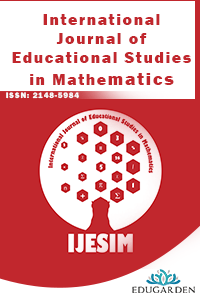Effectiveness of an Online Manipulative Tool and Students’ Technology Acceptances
Effectiveness of an Online Manipulative Tool and Students’ Technology Acceptances
Given strong research support for improvement of students’ conceptual understanding with multiple representations, it is important to understand effects of different representations on student achievement. In this study, an online manipulative tool (OMT) was introduced to students to support their study of rational number operations. The purpose is to compare different representational aspects of OMT and to estimate OMT’s effects on achievement and technology acceptance when compared to traditional classroom activities. Elementary- and middle-grade students were randomly assigned to the control group (N = 14) or one of the following three treatment groups: (a) audiovisual (N = 14), (b) virtual-kinesthetic (N = 15), and (c) dual-mode (virtual-kinesthetic and audiovisual combined) groups (N = 11). When the control group was compared with experimental groups, pre- and post-test results suggested OMT was more effective than traditional classroom activities in improving students’ understanding of rational number operations. When students’ achievement on pre- and post-tests among experimental groups was compared, no substantial difference was found. However, students in the dual-mode group scored the highest on technology acceptance survey. The results suggest learning can be facilitated by virtual manipulatives. However, students’ acceptances of technology should be considered when implementing new technologies
